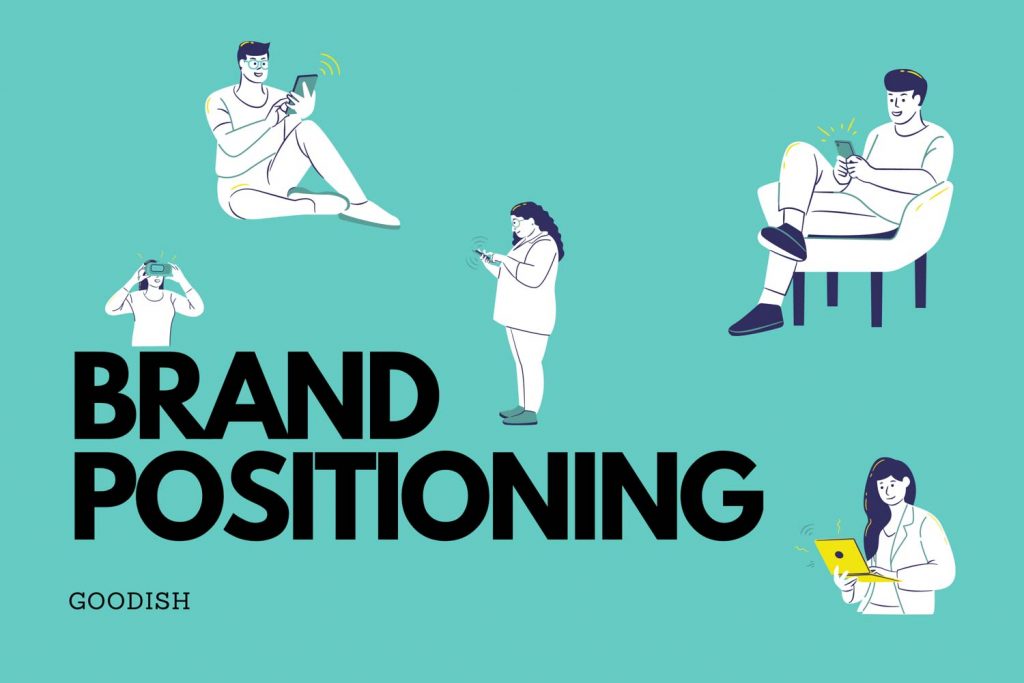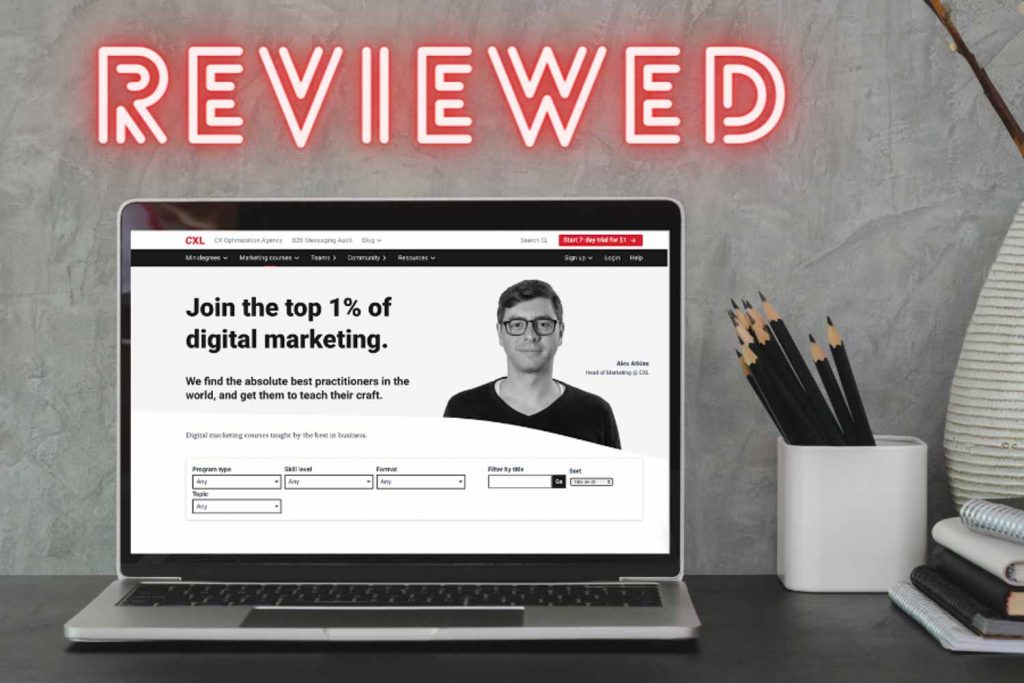So, you want to know about the go-to-market strategies of 2021? To be 10 steps ahead of your competition? To have the power to affect long-term changes in global markets as you sit at your desk watching it all unfold, from your bird’s eye view, as the pieces fall neatly into place, just as you envisioned. Well, dear reader, then you’ve come to the right place.
TABLE OF CONTENTS
Deciding between various go-to-market strategies in and of itself is a very “business/marketing 101” topic, everyone knows what it is (long term directions), how to do it (set goals, milestones, paths & budgets) & why you need it (gives a path to follow & a yardstick to measure success with). And yet, most mess it up one way or another. Why do you think that is? Were their goals not clear enough? Maybe they wasted too much budget on TV or maybe they should’ve focused more on SEO. Well maybe you’re right, but it usually goes deeper than that.
So, let’s talk about some common pitfalls, shall we?
Overcomplication
Business people love numbers & math, well more specifically we love spreadsheets. The smarter we are, the more we use them to “enhance” our decision making. And while market strategy is a “101” topic, we tend to not give this task to juniors, do we? We find the smartest, most experienced person (or agency) we can afford & hire them to run the numbers & come up with something brilliant.
And as they will inevitably feel the need to prove they’re worth their exorbitant fee, they will create giant spreadsheets & 50-page market research essays on the topic. Here’s the main issue with that – people don’t work that way (at least until some economist gets a hold of a genie bottle).
I’m not arguing against numbers, math or science today, but I am saying that using them alone to explain something as complex as a person is simply not enough. We’re a mess of irrationalities & contradictions, which no amount of number crunching will ever be able to sufficiently represent. Why do non-branded painkillers perform worse? Why is queuing easier, if we’re standing next to a slower queue? What in the name of all that is holy is purple? And why does everyone and their mother keep asking me about Bitcoin?
Qualia or subjective experience if you prefer, is what philosophers and some psychologists use to define the difference between knowing the chemical makeup of an apple & the taste of one. Again, I’m not arguing against any scientific, data-driven, approaches here. But it seems to me that businesses are constantly trying to out-math each other, rather than to try to give a psychological solution a shot. Personally, I blame the school system, but let’s not get into that.
Rory Sutherland gives a great example of this kind of solution in many of his talks, where he mentions how the UK government spent 6 billion pounds on improving high-speed rail lines to solve the problem of “people don’t like long journeys”. The solutions he presents are that for a fraction of that budget, you could simply install good free Wi-Fi on every train & make the journeys more pleasant. Or you could spend 1 billion, have supermodels serve free Château Pétrus to every passenger, and they would ask for the trains to be slowed down.
Tactics Are Not the Same as a Market Strategy
Yes, I know this may seem obvious, but somehow, I see it cropping up way too much. In fact, this is made abundantly clear by simply googling terms like “go-to-market strategies” or just “market strategy”. The first image results show stuff like bullseyes, chess, arrow & bar charts going up.
Now tell me, reader, what do you think an archer’s strategy is in a competition? I may be misinformed here, but it seems to be “hit the bullseye” as many times as you can. And while that could be called a strategy, personally I don’t see it as “much” of one.
The same thing happens when you start reading the articles. I keep hearing stuff like “do more video advertising”, “create good content”, “establish a social media presence”. I don’t disagree with those statements, but strategy, they are not.
Execution > Strategy
This is a problem I find most common when marketing agencies get involved. Look, for various reasons, there tend to love nothing more than to charge you for strategy. Some of those are:
- They’re going to have to create a “strategy/plan” anyway, so might as well bill it
- They can charge a lot for a 100-page document you’ll never read.
- Strategizing is simply fun for some (makes us feel smart or what not)
The problem comes when a client doesn’t have a strategy & has a very limited budget. Because strategy is great and all, but execution is, and always will be, king. A boring, mediocre, copy-paste strategy with good execution will yield results. An amazing one, which leaves no budget for ads will doom the client. If you get someone to do this for you, make sure they’re not wasting too much (proportionally) of your budget on it.
Alright, let’s get into a few examples of go-to-market strategies to give you a feel for it. I want you to actually do none & all of these. By none I mean none of these should be your strategy (unless you can do it better) & by all I mean you can still use parts of these on your own as tactics.
1. Social Media Strategy
This is going to sound slightly daft, but bear with me here. A great marketing strategy for social media marketing is..*drumroll*.. to be social. And yet, most companies aren’t. Why? Well, a couple of years ago I’d’ve talked your ears off about how historically the first TV ads were pretty much radio ads with pictures, or how the first websites were basically digital brochures, since that’s what the creatives at the time “knew”. But social media apps at this point are old enough for that argument to not sit quite right with me. The honest answer is I don’t really know why most don’t get it.
Social media isn’t a glorified e-mail newsletter & yet that’s what everyone is doing. Posting updates about their latest blog post or products & boosting them for likes. Then they wonder why the almighty algorithm (praise be) doesn’t bestow organic reach upon them. No, your job as a social media marketing expert is to facilitate good social interaction.
You really have two ways to go about this, much the same way you do when you have a beer with your mates. You can either be the one that starts interesting conversations, telling a story about whatever & then chat with them about that topic (in the comments) – see any successful Youtuber, Twitch streamer etc.. Why does it always feel like they’re just a friend talking to me?
Or you can be the one who organizes the meetup, makes sure everyone has had enough to drink for conversation to flow, the music is good & all the other little things that make drinks out “a good time”. In social media strategy terms, that’s your forum, Facebook group, subreddit admin.
A great example (because I’m in it) of the latter is a group on Facebook called Cabblemodders. Started by a company called Cablemod it’s a place on Facebook anyone can geek out or ask for help on any PC related topic. It’s filled with cool, helpful people & stuff that would interest their audience. Nowadays, all they really have to do is moderate spam content, otherwise it’s 60,000 people that are promoting their brand to each other every day.
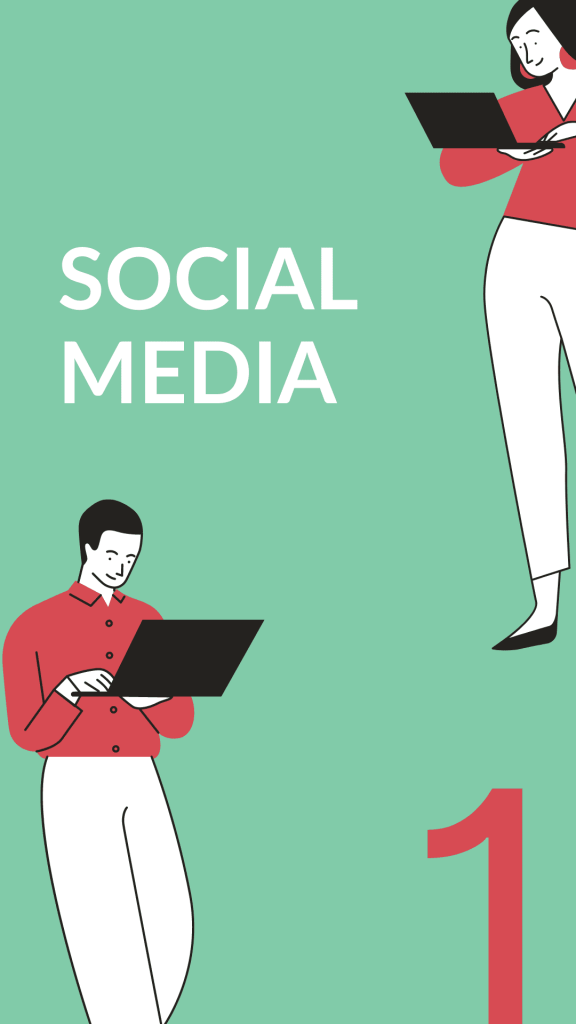
It is that simple, your social media strategy should be human centric. Other than that, talk with your audience for god’s sake! For that you can apply the principles of tactical empathy, a term coined by the leading FBI terrorist negotiator Chris Voss is “The deliberate influencing of your negotiating counterpart’s emotions for the ultimate purpose of building trust-based influence and securing deals. The ways you employ your voice, labels, mirrors, and dynamic silence all contribute to tactical empathy.”
Now, I’m not alluding that some of your followers might be a bit terrorist-y, but if you really listen to their complaints and respond with empathy, you might turn them into fans. After all, people just want to be heard. Isn’t that exactly what brands do? They communicate their values, beliefs and what they stand for, and in the “consumer centric” era, the power shift can be felt and branding becomes a two-way process; it is no longer about communicating your wants and needs. It is about listening and responding.
In digital terms, we could translate tactical empathy into; the way you use your voice to talk to your audience based on where they are in their buyer’s journey. And yet, more often than not, brands are doing the equivalent to a particular social faux pas of mine, where I reintroduce myself to someone, I’ve met quite a few times before (sorry Steve, I’ve got you now).
Though another example is even more common. Where brands behave like that scammer, who acts like he’s known you forever, right before asking you for money. Try to imagine yourself talking to a friend before you post & hopefully, you’ll avoid losing them.
In conclusion, yes, be unique. Yes, create good content & measure engagement. Yes, do all the normal stuff. But really, approach social media like you’d approach making a few friends. If you’re cool, you might just make a few million of them.
2. CRO (Conversion rate optimization) Strategy
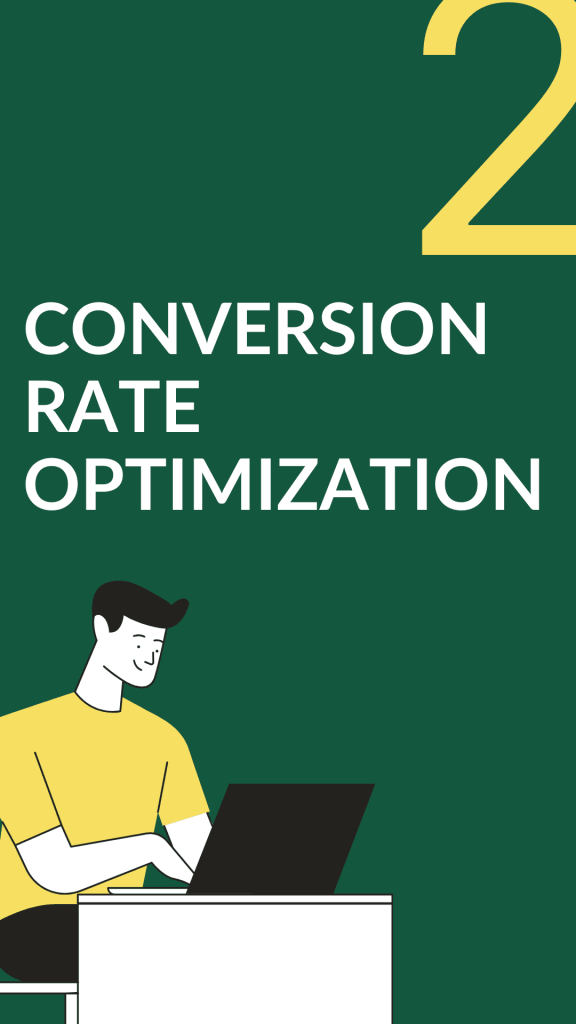
One, unspecified, day, maybe much like this one, a mathematician gave up on solving P vs NP & figured he could earn his millions just as easily by ruining the fun of every marketer ever. Thus, CRO was born. Using his ultra-super math powers. The mathematician dedicated his life to fighting campaign inefficiencies & the forces of creativity!
Alright, I’m being a bit flippant here. We creatives are fine. And it goes without saying, that any successful marketing strategy has been accompanied by good mathematical optimization. But before I get into it fully, if you’ll allow me, I’d like to stand on my soap box for a bit. Mostly because I’ve seen this go wrong so many times before.
Optimization is great, but it needs to be constantly rained in. Otherwise, we quickly fall into a trap where we stop seeing people & start seeing numbers in their stead. What happens then? Well, as weird as this sounds, I’d call it over-optimization.
Over-Optimization
We’ve all seen this before, where we visit a website, which has a garish color scheme, GIGANTIC “BUY NOW!!!” buttons, flashing all over the place, time limiters & whatever else. You’ll ask the marketing team what happened & they’ll tell you that tests show this is the version, which converts the most. I very much doubt that statement (and person) whenever I hear it, here’s why.
If that growth hacker (or whatever their title is nowadays) ideas are so brilliant, why doesn’t Apple’s website look like that? Or Google’s? Is it because they can’t afford their salary? No. Is it because they haven’t thought of it or tried it all? Also no. It’s probably because they’re not optimizing for the lowest common denominator (in people terms). I very much doubt your audience sees themselves as “average”, you should stop seeing them that way as well.
A good example I heard of this at one point or another, was the optimization of a financial (insurance) services sales brochure. Before optimization it had become pages long & full of complex terms. Why? Tests showed that every added paragraph made it convert better. Mostly because those who bought the service, felt safe, because those who wrote that thing “must be smart”. But that really leaves only “trusting” people in their audience doesn’t it? So, they tried an ultra-short & easy to read leaflet style brochure & their sales figures dramatically grew. They’d started out with an audience of “trusting” people and kept unknowingly optimizing for that. Sure, it’d increased sales by a point or two, but they’d been losing out on 10x that audience from people who’d like to know what they were buying, but who also needed that kind of service.
You can always count and crunch the numbers, but if you don’t know the real metrics that matter, or what you’re even optimizing for, none of that is really beneficial for your company.
So, here’s what you got to do to be Apple, have a branding person argue with every decision your growth marketer wants to make (& vice-versa). They’ll keep them on point with your audience & making sure it doesn’t become a garish mess. If you’re a company of 1 right now, you can do the next best thing. Something I’ll lovingly refer to as “become a crazy person”. Yes, argue with yourself, get two hats if you need to & stand on opposite sides of a room, whatever helps. Just make sure you don’t end up with an over-optimized mess.
When Can I Be Sure?
Alright, let’s say you’re measuring the right things, when have you measured enough? Well, let’s say you want to test your audiences’ demographics a bit, so you take a sample size of hundred people – 50 men & 50 women, and you realize women click your ads 51% of the time, while men only do it in 47% of cases. Alright, time to change every campaign’s target to women, right? Well hold on there for just a second buckaroo, you can’t be certain those numbers are meaningful. All you really know is that out of those 100 people, women are slightly likelier to click vs. men. If your actual audience is 100x that size, you don’t know anything about them yet.
This is where we get to a concept called – statistical significance. Don’t worry, this is basically the only math thing I’m going to bore you with today. Basically, the lower the variance & the smaller the sample size vs the entire population is, the less certain we can be that those results weren’t just a fluke. Now there’s various math-y ways to calculate exactly how significant a result was like chi-squared (you can Google the formula yourself), all I really have to say on the topic is you will never achieve it.
Not because you don’t want to, I’m certain you, dear reader, care about being right. Mostly because you’ve got a business to run, not a doctoral thesis to write & testing everything to its fullest extent is way too expensive/time-consuming.
So, here’s what I suggest regarding your conversion rate optimisation strategy. Never forget about statistical significance, but aim for personal significance. If you feel confident in the results, that’s good enough.
3. Content Marketing Strategy
“If you build it, they will come”. Nothing like a misquoted line spoken by Ray Kinsella in the film Field of Dreams to spark our day! Of course, there’s the question of: build what? Or, how? But if that movie had taken place in the digital field instead of a corn field, the most important question would’ve been: “why”.
Well, in this case maybe “what” would be more apt. As in “What can you even say about content marketing, that hasn’t been told a billion times before?” Well let’s take a look at the fundamentals. Everyone says make good content, but what exactly does that even mean? A better way to put it might be “Try not to be boring”. To me that entails a few things, chief among them are these two:
- Don’t copy – this is the what
- Be yourself – this is the why
When your “why” is clear, it is all about adjusting that message through different media formats. Repeat after me everyone, “the medium is the message”.
Don’t copy is pretty obvious I think, but nonetheless, even when you google something like “content marketing strategy”, you’ll get millions of nearly copy-pasted articles on the topic. Insanity really.
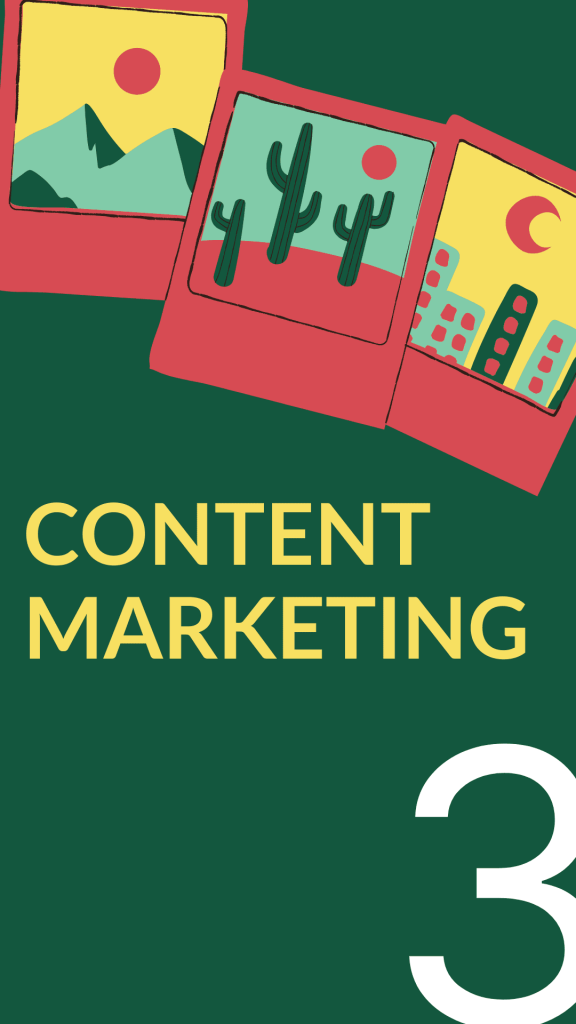

So how do you accomplish both? I’d tell you to share a bit of yourself. Your opinion is unique (I hope) & if written semi-decently it’ll also show your values to your audience. It also helps if you know what you’re talking about, so don’t hire a straight out of college kid to make your content, because they can’t do any better than copy other articles. Rather reach out to a content marketing agency like Goodish.
I hope that this content fits that criteria. I hope that through my words you feel that I care about marketing, love the little quirks people have & am mostly “done” with the general marketing industries BS. If it doesn’t, I’d recommend you leave, because that means I don’t know what I’m talking about.
SEO Strategy
Another constantly talked about topic regarding content marketing is SEO or search engine optimization or worrying about what mess Google’s engineers have wrought up today, threatening to bankrupt my business.
People will tell you that content needs to be both enjoyable to humans and search engines.
Now, I’m not an SEO guy, you should hire an expert (contact Goodish Agency instead), but here’s why I think you shouldn’t worry too much about it (still, get in touch).
Google’s (or other search providers) entire goal is to help their users find the best content for them. Yes, you can optimize your content for current search algorithms, but those will inevitably change. What doesn’t change (much) is whether people like what you wrote. So, worry about making it good for humans first, search engines second & search engines will inevitably catch up to your brilliance later.
The Importance of Storytelling
Alright, you don’t want to google “content marketing” and click on the first HubSpot article that shows up, I’ll try to give you a brief on what’s written there.
Consistency is key. This is why you need a plan; people are habitual beings so make sure your tone of voice doesn’t shift too much from one article to another (if you’re being yourself it shouldn’t be a problem) & that your publishing schedule is every Thursday or whatever works for you.
Good content is (usually) truthful. Your audience today knows more about you, your product & your competition than they ever did in history. A new user is smarter, better educated, and can smell an insincere story (which I’ll be discussing later in the native advertising portion of this ungodly long article).
Good content is (usually) truthful. Your audience today knows more about you, your product & your competition than they ever did in history. A new user is smarter, better educated, and can smell an insincere story.
Let’s take a moment to remember the times a telemarketer called you (before the bot days) and asked; “Do you have a minute”? Your brain immediately went through millions of different scenarios of how long that minute would actually be and how much of your money they were trying to scam you out of.
As they read you their scripts, which had you replying yes as many times as possible. “Sir, do you drink water”? “Do you like the feeling of being refreshed?” “Don’t you owe it to your body to gain some extra nutrients from your water, like, infused vitamins?” And, of course, you said yes, if you hadn’t hung up at that point for whatever reason, even though you are compelled to say that you were actually a kangaroo rat and had gone your entire life without ever drinking a single drop of water (thanks Wikipedia), but you feel tricked and annoyed and contemplate your entire existence. Some of these phone calls have moved into the digital sphere and once again, they are just as annoying as they ever were.
Anyway, what’s my point with all that? Well, a few things are. First off, we don’t like getting sold to. That’s the entire point of content marketing. You read my articles, start to trust me, my company & my abilities, and when you need whatever I’m selling, I’m who you think of. But also, don’t use cheap tricks. The internet is filled with clickbait content like “5 ways your cat is better at graphics design than you” (admittedly, I’d read that). They don’t work because you’ll be one of the millions doing the same thing. Go try something else & someday I just might become your “dear reader”.
4. Video Marketing Strategy
When it comes to the question of having or not having a video content strategy in today’s time & age, I don’t think I need to throw statistics at you to show you video is great for getting messages across.
Instagram’s algorithms are pushing video content, reels/tv, Facebook stories, etc. it seems like there’s so much video content that needs to be generated and that you will need your own Hollywood production team and tons of equipment to do a standout.
Nowadays good software & mobile apps make creating video content a quick, cost-effective, and “fun” process. No more specialized, heavy equipment, what you need today is your phone (though it helps if you have a good one) and a good video marketing strategy.
“But if it’s easy, everybody will do it, right?” That’s right! And everybody is doing it. So creating quick content on the go eg. generic content is not an option. You need to own the process starting with realizing where your buyers are in their journey, what channels they’re using, and what they are searching for, and then find a unique way to answer their relevant questions, entertaining them in the process.
Helpful & fun, easy & peasy. A video marketing strategy is a perfect tool for generating brand awareness & creating trust. Take a relatively new platform, TikTok, where brands are finding ways, to be honest, straight-forward, and helpful, but be aware, just a whiff of not being your true, authentic self, and people will swipe on you. Gen-Z is savage AF. As they should be so, use your video efforts wisely and think about how you can cater to your audience.
If you’re trying to build brand awareness, your personality, values, beliefs are great tools to let your visitors get to know the real you. We talked about this earlier when we discussed content marketing. Take a deep breath & just be yourself. Videos in this phase should be educational, branded, helpful, and showcase you as an industry leader. Bear in mind that you’re not selling anything right now. Your efforts should be focused on creating genuine interest and relationships.
If you’re trying to build brand awareness, your personality, values, beliefs are great tools to let your visitors get to know the real you. Videos in this phase should be educational, branded, helpful, and showcase you as an industry leader. Bear in mind that you’re not selling anything right now. Your efforts should be focused on creating genuine interest and relationships.
Miha Mulec Tweet
Next up, we engage. This is where you can offer your demos, case studies, in-depth product analyses, explainer videos, and anything else that you can think of. Make sure to break down how your product can help people achieve whatever it is that you are selling.
Finally, delight. Exceed their expectations & you’ll delight them. However, video can help show people some ways to use your products that they might not have noticed themselves. Paint a picture of how delightful it is to use your product.
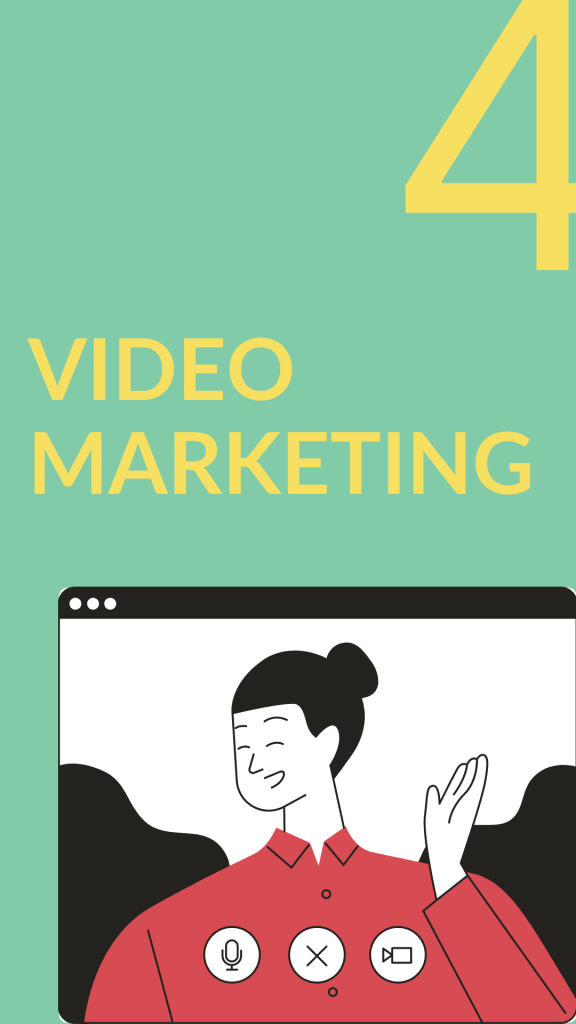
Video creation may have become easier, but it’s still not easy! So make sure you take to stay organized by following these steps:
- Preproduction: goals, scheduling, and organizing, not only of the content but also the team involved, technical details such as location, wardrobe & set design.
- Production: video filming & organization of the content
- Post Production: video editing, distribution & analysis of the content
Be aware that you have to set very realistic goals here; if you are a “1 person team”, you’ll only be able to deliver videos on a weekly (or even monthly) basis. Quality over quantity though, so take your time & make sure it’s good.
Taking a course can also help. Film schools & online courses can help you see creative ways of substituting your budget/time shortfalls. And sometimes something really cheap, but done well, can cut through the fluff & reach millions. Most new Youtube channels I’ve seen grow well have great stories or educational content, but mostly it starts with just someone with a mic & some stock video. If the topic is interesting, people will watch.
5. Native Advertising Strategy
Ah, native. Make sure you’ve got a good lawyer before delving deeper into this one. So what is a native advertising strategy? Well, it’s one of those “vague” marketing terms that is a bit different depending on who you ask, but here’s my way of thinking about it; “Native advertising is any paid promotional content embedded into another medium & made to blend into that medium”. If you’re looking for native advertising examples think sponsored articles in newspapers, or Pepsi appearing in a movie you’re watching.
Really, the point is to “trick” the viewer/reader into not seeing it as an ad, but as a normal piece of content. Social media used to be full of this kind of stuff too, but regulations cracked down a bit over there & forced influencers to declare who sponsored what in their content. Regulations around the movie or publishing industries are, however, a bit lax.
Either way, I personally find this sort of thing to be highly manipulative & in a legal grey area so I’d advise against it. Usually, when brands got caught doing it, consumer backlash soon followed. It’s also, usually, a bit pricey.
However, native advertising presents a good way to support your organic reach efforts as it allows you to publish content in the publications relevant to your industry. It’s usually written in a similar tone of voice as the website you are advertising on so it seems as though the editorial staff picked the story and wrote the article themselves. Thus readers are more likely to read it as the tone of voice fits their expectations & they have already developed a bit of trust with the publication/movie character.

Hence, native advertising is a great marketing strategy if you’re focusing on increasing your brand awareness.
So yes, this can work, but personally, I’d recommend trying a different path. The only “good” way to do it, which I’ve seen so far is when you add a bit of humor to it all. Take an example of the most environmentally friendly Tesla to date.
6. Hyper-personalized marketing Strategy
I once knew a man, a crazy scientist type guy, who preached about data-driven everything. At the time he was, among other things, optimizing his office’s consumption of toilet paper. I was young, impressionable & needless to say, completely enamored with using math and logic to push outcomes as far as they’d go.
I consider myself lucky to never have worked for him, and not just because I get to use however much TP I want. You see, math & logic are great and all, they have their place (even in marketing), but I now find that “out-smarting” the competition is rarely a viable strategy, since big corporations employ much smarter people than you or me. Luckily, people tend to not be fully rational, so while everyone is busy “out-smarting” each other, we can focus on “out-empathizing” them.
With that in mind, let’s get to the topics at hand, starting with hyper-personalization. This go-to-market strategy understands what unique snowflakes we are (to the greatest extent possible). Ideally, you and I would see fully different ads, websites and whatever comes our way through our buyers’ journey, since we are different people
Now a good sales rep does this on the fly, but since we marketers are usually talking to at least a few thousand people at once, we have limited flexibility. However, math is on our side long-term. A sales rep can always only talk to one person on the phone (I’m simplifying a bit for example’s sake) & every time they hang up the phone most if not all that “content” is lost forever, ours stays. With every blog article we write, every ad we create our total amount of content grows. While not all of it is “great”, we can create an ever-increasing mesh of paths from the ones that performed decently. Using numbers to reiterate that; 1 blog post gives us 2 options (show don’t show), 2 give us 4 (order gets involved), and so on.
Sounds complicated, no? Well, I’m not going to lie to you, it can get very complex, but we at least have some tools to assist us along the way. Pretty much all major players allow us to create customer journeys (remarketing, email automation, etc.) & then there’s stuff like React, which allows us to dynamically adapt our websites easily – or rather “more easily” than in the PHP & jQuery days. Even so, we need a good strategy for content & path creation, since no tool does it for us (yet).
Try the "why not loop” - You start with a core reason to buy your product, you create an ad for that “Buy X for Y, it solves Z”, then try to ask from a user’s perspective why they wouldn’t buy X.
I generally go about it with something I call a “why not loop”, here’s how that works. You start with a core reason to buy your product, you create an ad for that “Buy X for Y, it solves Z”, then try to ask from a user’s perspective why they wouldn’t buy X.
I suggest you start with the easy ones & work your way down:
- Not the right time? – Create new ads at different times
- Don’t trust the brand? – Link them to your super-professional looking website and/or try a money-back guarantee
- Not sure if I need it – create a blog article about why people need it, show that to them, those who “read it” get the buy now ad after.
- Etc.
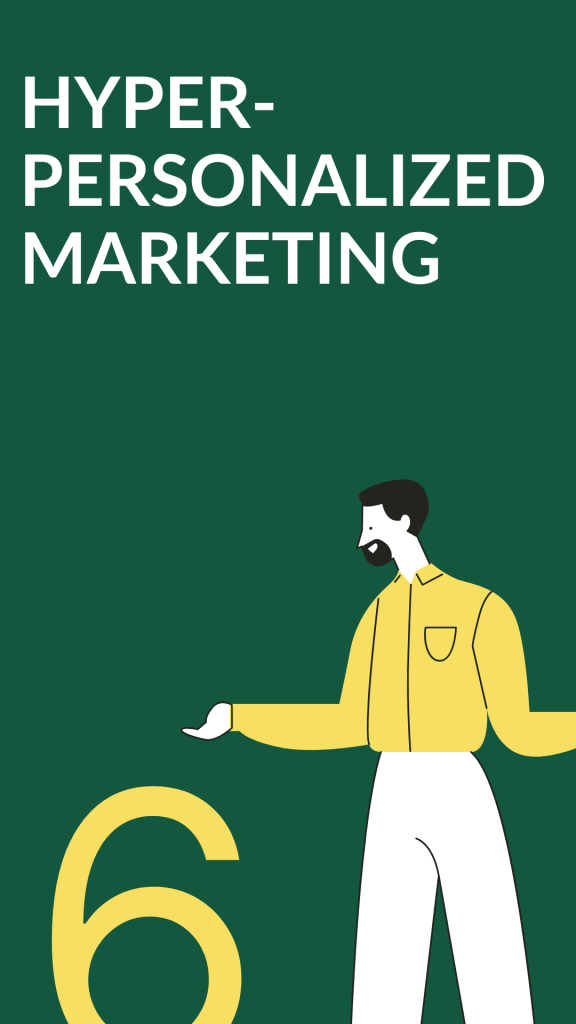
I’m being pretty broad because I don’t know what you’re selling, but you should be aware of your own users & the context/frame-of-mind they’re in while looking at your content. Take an hour or two to think about it, I’m sure you’ll come up with a bunch of stuff. Anyway, in reality, every step of the buyer’s journey has its own “why not loop” (wrong times, a wrong bit of information, etc.) so this can scale basically infinitely once you get started. Later, if so inclined, you can automate the sorting/priority of these questions based on data you get (if most fall to why not 4, try that as option 1).
SaaS is a great place to do this, since profit margins, or as we marketers call it – budget, are pretty high. So, say your users have a $3,000 LTV & on average 10% convert. You now have your “final drop-off point” – you can spend up to $300 per person trying to convince them – ‘bout 300ish chances/clicks. However, your boss will be happier, if you try to get rid of non-converting users sooner than that. This is something you’ll have to decide on your own, but do consider when you want to give up on any given user, because technically you can keep them in these remarketing loops forever.
One final thing here, this kind of hyper-personalized marketing might be on its way out. Google is reforming the way Chrome’s cookies work to prevent a lot of this (sorting users into Google’s own cohorts, rather than letting you control the data), Apple is doing something else, with similar results. User tracking, remarketing & other similar techniques won’t ever become impossible, but they might become more expensive in the upcoming years, something to keep in mind if you decide to go with this strategy.
7. High-touch onboarding Strategy
We all like to feel pampered, and we expect it when we buy expensive stuff. The more expensive, the more attention we expect them to give us. High-touch onboarding strategy meets those expectations – making as much of the buyer’s journey an “involved” process. Think about the difference between buying a toothbrush vs. a car. Or that car vs. a yacht. So, if you’re selling expensive stuff, make sure your involvement with the customer is as high as possible, offer consultations, be available on the phone, offer free coffee in your showroom… Alright, I’m even boring myself here, we all know this because we expect it. Let’s talk about something more fun – incorporating this stuff into lower price products.
Here’s my question for you, which (experiential) parts of a Rolls Royce buying process can you incorporate into your $30 tier? Well for that kind of money, it needs to be cheap/easy to do, but that doesn’t mean it can’t be impactful on an emotional level. A quick example I gave a client recently was to offer “a 15-minute design consultation”, where they’d adopt their app’s color palette to your brand. Honestly, it isn’t even about the colors (or fonts), that’s just an easy thing to make a variable of in the codebase, it’s about the effort.
So, to do a high-touch onboarding process well, we need to take a look at how expensive car buyers pick the color of their interior/exterior & that process, then use those same techniques on that call.
Let’s expand the question a bit, can we get them to pay us to sell to them? For your inspiration – Ferrari does something like that. When you buy one, you have 2 options to collect your car. You can pick it up at the dealer for free, or you can pay $500 + travel costs, travel to Italy for a “factory tour” & pick up your car there. Not only are you paying them for the privilege of getting an on-site brand speech, but you’re also saving them the delivery cost. Now, this is possible for them due to outstanding branding, but maybe you can find a similar thing with your company.

Honestly, I don’t have a lot more to say on this topic, it’s not that complicated. Just think about what sales techniques/processes for expensive products you can involve in your own product & how/which would delight your customers.
8. Customer retention optimization Strategy
So, you’d like to retain your customers? Revolutionary. But you’re right, it’s important so let’s talk about it. To me, customer retention is about optimizing the experience your customer has with your brand. Breaking it down further, customer retention optimization is usually more about optimizing the context and customer experience, rather than the product/service itself. Although, if your product/service is bad, go ahead and improve that as well.
A particularly illustrative example I like for this is a Michelin star restaurant that smells of sewage. Their product is their food, but they can spend forever optimizing the product, as long as the context (the smell) is bad, you’re not eating there.
The pure marketing definition of product context is broader of course. It also encompasses stuff like brand perception, general perspective, unboxing experiences, support, and just about everything except the product/service itself. We talked about this in a previous article, but to reiterate a few things;
- Your primary goal with customer experience (CX) optimization is to exceed customers expectations
- The best way to measure is to ask, but you can also use other metrics like time spent using your product, bounce rate for ads->website, etc.
I might’ve mentioned this before, but when you ask, make sure you take every answer with a grain of salt. People mostly don’t make rational decisions, we make emotional ones, which we post-rationalize to ourselves later. They aren’t really lying to you, they’re lying to themselves & then telling you what they actually believe is the reason they bought something.
Customer Retention Optimization is usually more about optimizing the context and customer experience, rather than the product/service itself. Focus on exceeding customers' expectations.
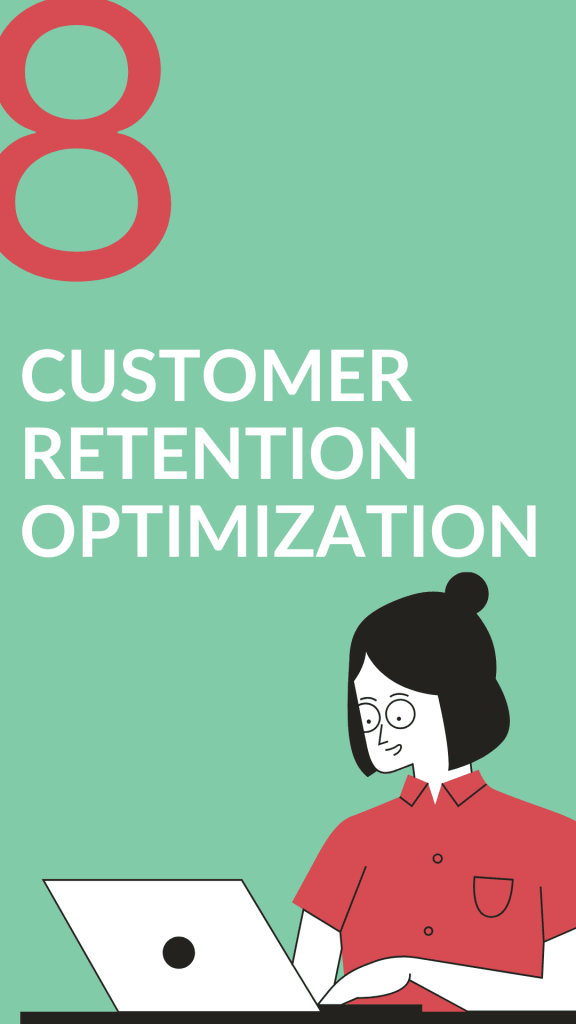
A great example is the custom water cooling system I installed on my PC a few years back. Now if you frequent PC-related subreddits or FB groups, you’ll see them around a lot. Most people will tell you they spend $1000+ on their cooling system because it’s “quiet” or because it “cools better”. All of those reasons are true, but it’s also BS from a “why did you buy this” standpoint. Here’s why I did, and why I assume most people do; “It looked cool, so I wanted & could afford it.”. Yeah, really it’s all about the aesthetic. One provider (EKWB) of these types of systems gets this better than most in the industry. If you’ll check out their feeds it’s all pretty pictures & video, because that’s what their buyers really want.
Anyway, back to customer experience (CX). Amex’s retail monitor shows that about 85% of retailers (and their customers) say that more product information is better, and yet, that same study showed that people, when given more information, were actually less likely to buy. So what was actually happening was that people were making intuitive/emotional decisions & then simply using product information to post-rationalize their own splurge.
Another interesting phenomenon here is the effect price has on it all. Good deals are great, don’t get me wrong, but neuromarketing studies also show that expensive, luxury goods stimulate the same-ish excitement in our brains. It’s as if the same excitement we get when we find some incredible deal is generated within us when we buy something exorbitantly expensive. Try to get an economist to explain that to you. Everything in the middle though is a bit “meh” to us, so try to stay out of that range, if you can.
I also previously mentioned perspective. Remember price is relative, it isn’t really a dollar amount but a dollar amount compared to the pain we’re solving & the prices surrounding it. Rolls Royce doesn’t really go to motor shows anymore. They showcase their products at plane or yacht ones. Why? Because after looking at hundred million dollar planes all day, a $300,000 car is an impulse buy. Might as well get two, since we didn’t get that plane, right?
Anyway, we’re optimizing for all these things when we’re optimizing customer experience (& consequentially improving our customer retention rate). There are ways of quantifying this stuff (well, to an extent), but it’s also a bit of an art. Check out the various tools offered nowadays to which will assist your customer retention optimization strategy, but also read up on developments in psychology. If you can merge the two, you’ll be way ahead of someone who’s just following the numbers.
final thoughts on Go-To-Market Strategies
You’ve gotten this far? I’m actually impressed. If we ever meet, tell me I owe you a beer. I wish I could go on, but budget & real-life restrictions force me to wrap up this article, but if you’d like to know more do give the agency a call, I’ll be happy to talk your ears off to no end about all of this. Anyway, I’ll leave you, as I tend to do, with some pseudo-scientific, motivational drivel.
Since the enlightenment, the scientific process has been the tool of choice humanity has used to solve problems. With it, we’ve traveled to new planets, taken pictures of black holes & transformed a multitude of “magical” seeming things into explainable phenomena. Honestly, we’ve gone far. But there are a few mysteries we’ve yet to answer, and maybe we one day will.
Maybe one day, we’ll have a materialistic definition of how & why a bunch of chemicals, meat & electricity became you or me. Maybe there is no such materialistic definition. But, I for one am happy to live in this time, where one only has to look into themselves to find new questions, where if one craves a bit of mystery, they need only look out a window or smell a few flowers. Maybe we’ll never really know why we’re here or how any of this works, maybe we one day will. But for now, let’s try, you & me, to enjoy discovering all these new quirks, which make us all human.
Eh, that ending is a bit pretentious, even for me. So, huh… A mathematician, a finance director & a marketer walk into a bar, arguing about their latest ad campaign. The barman looks up and asks “Why are you talking to yourself?”. “It’s my job”, I reply.




